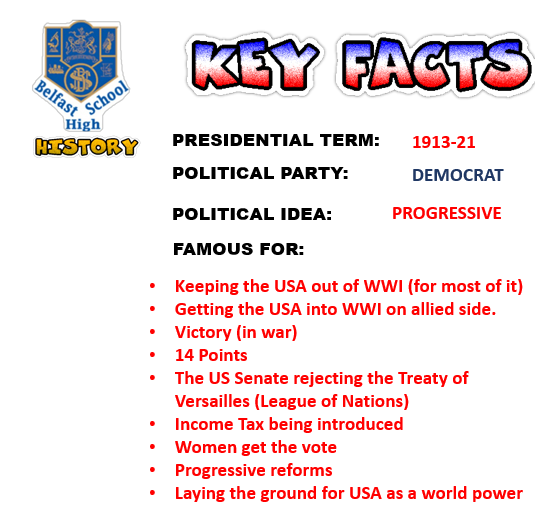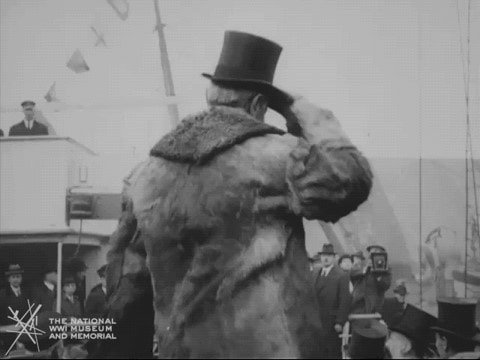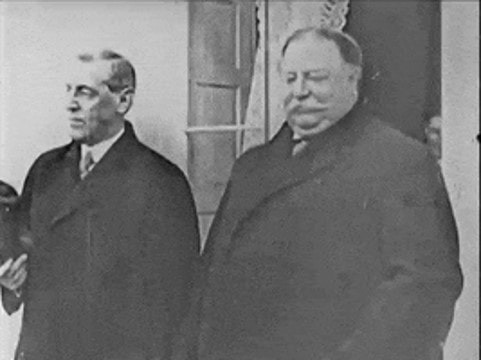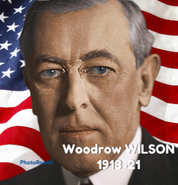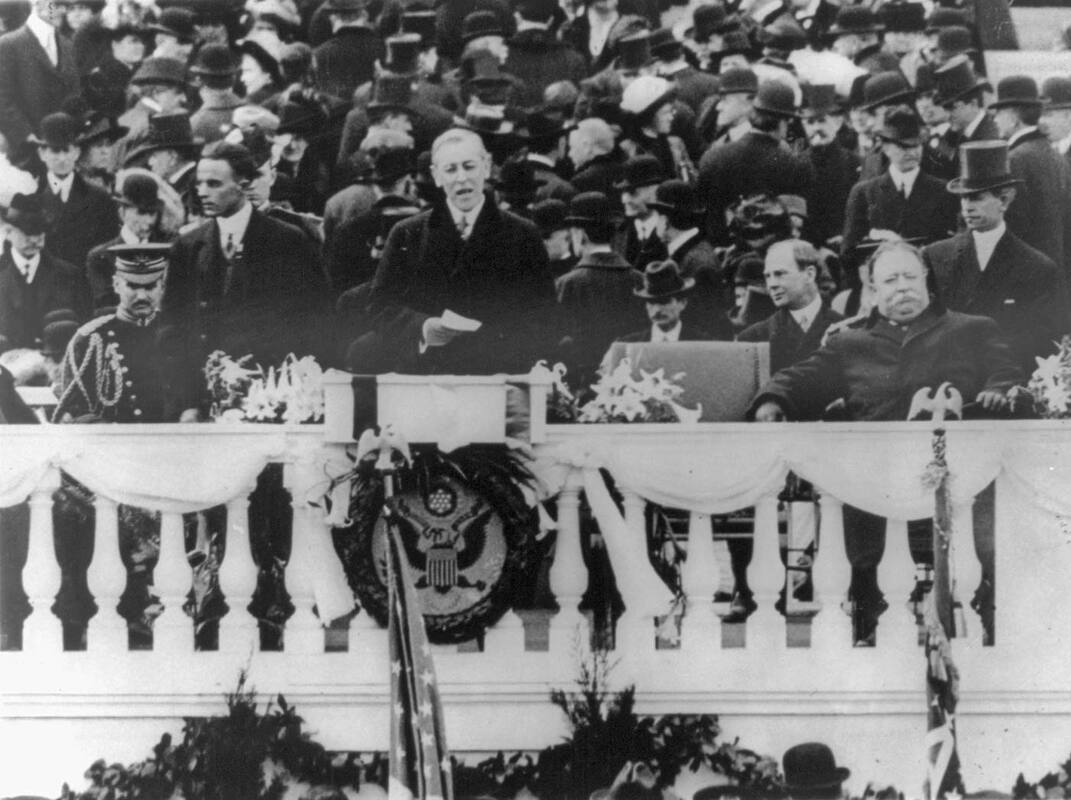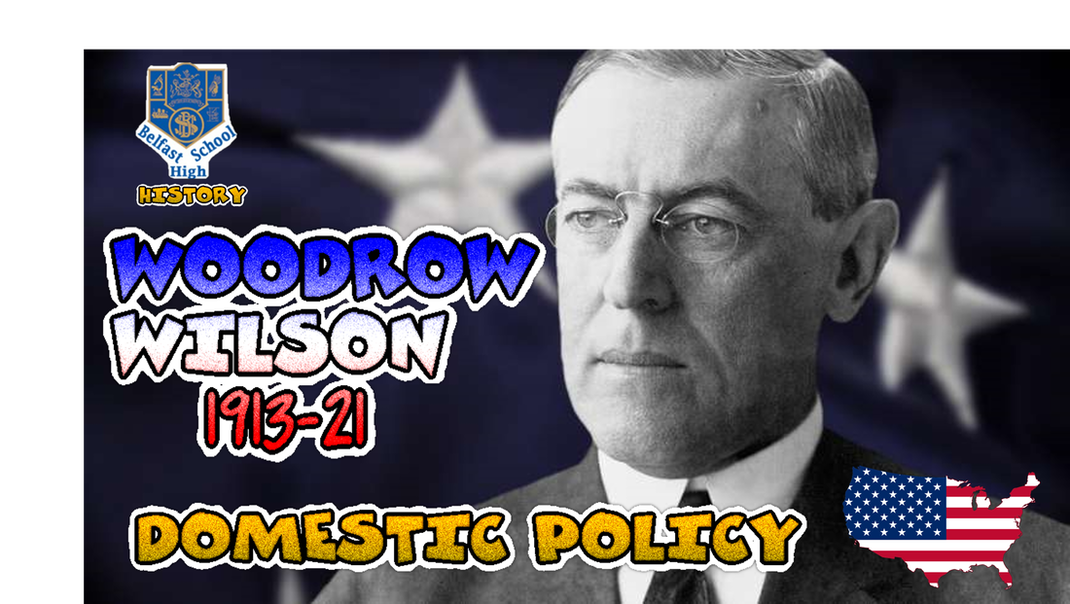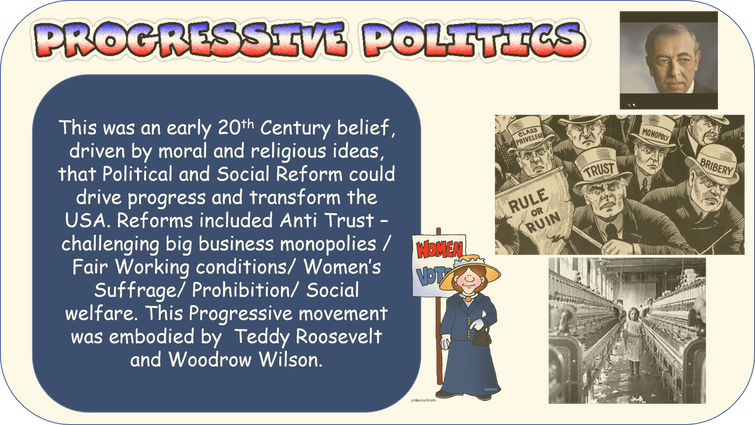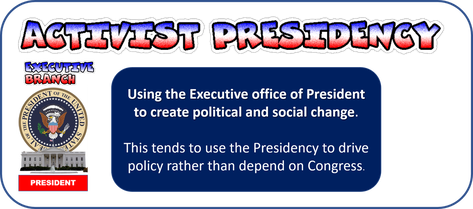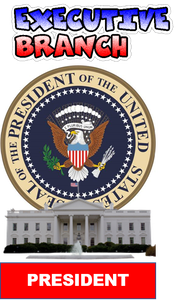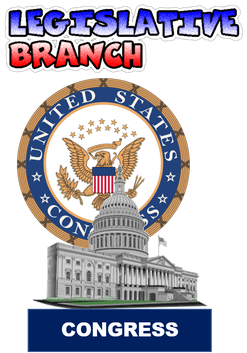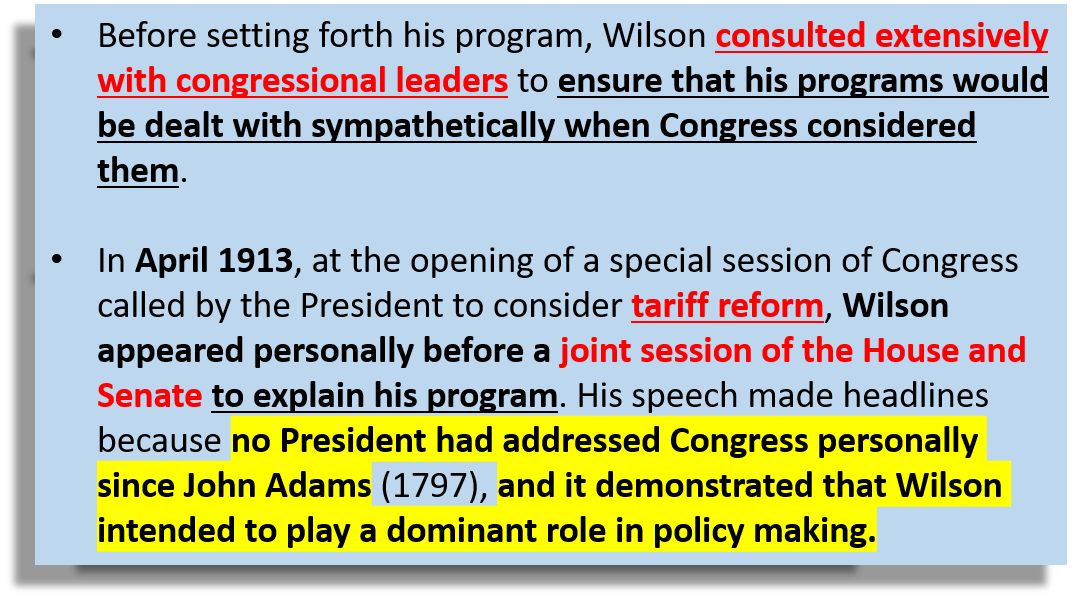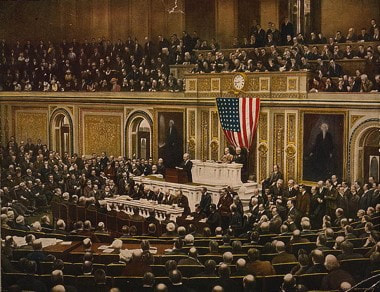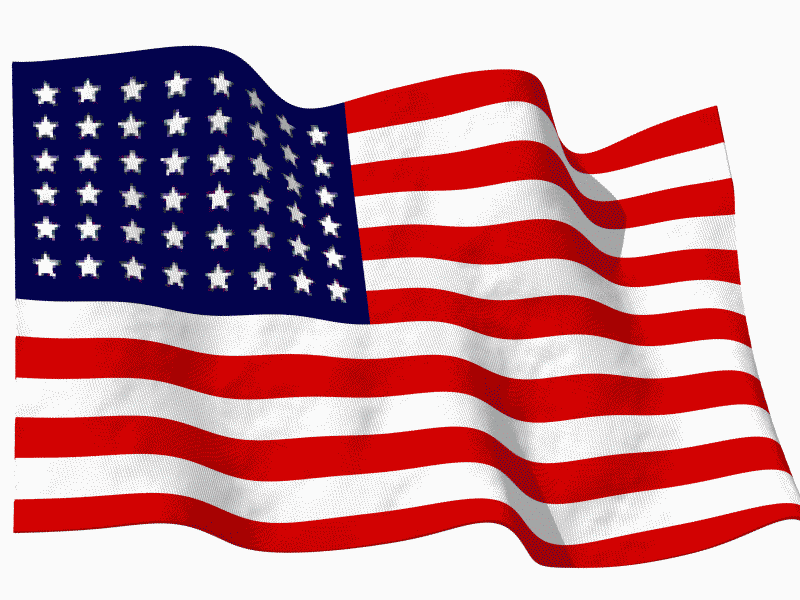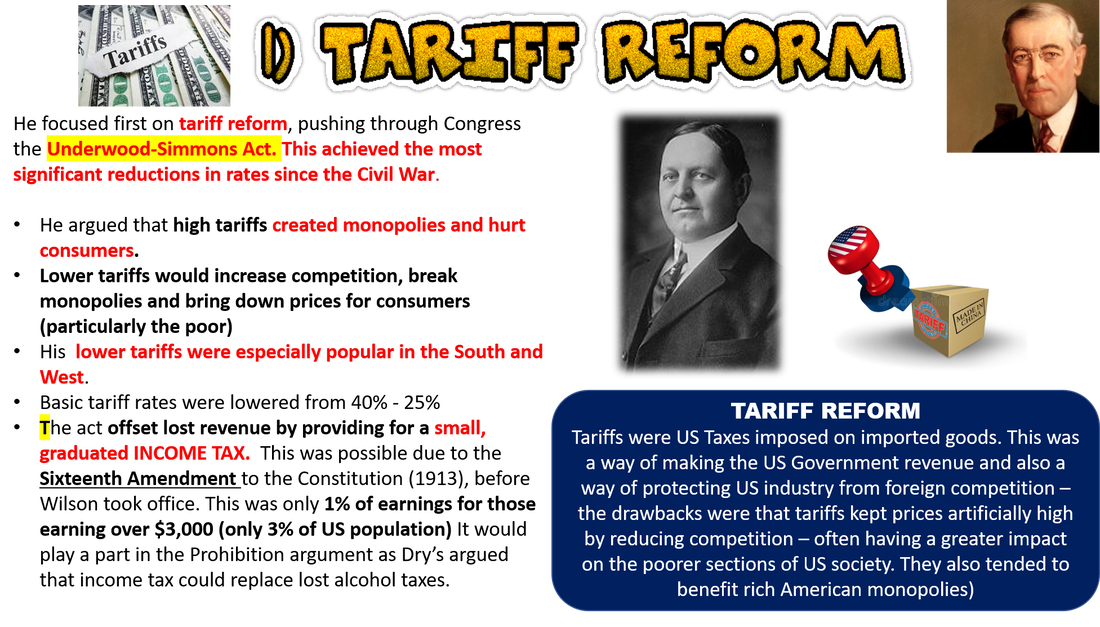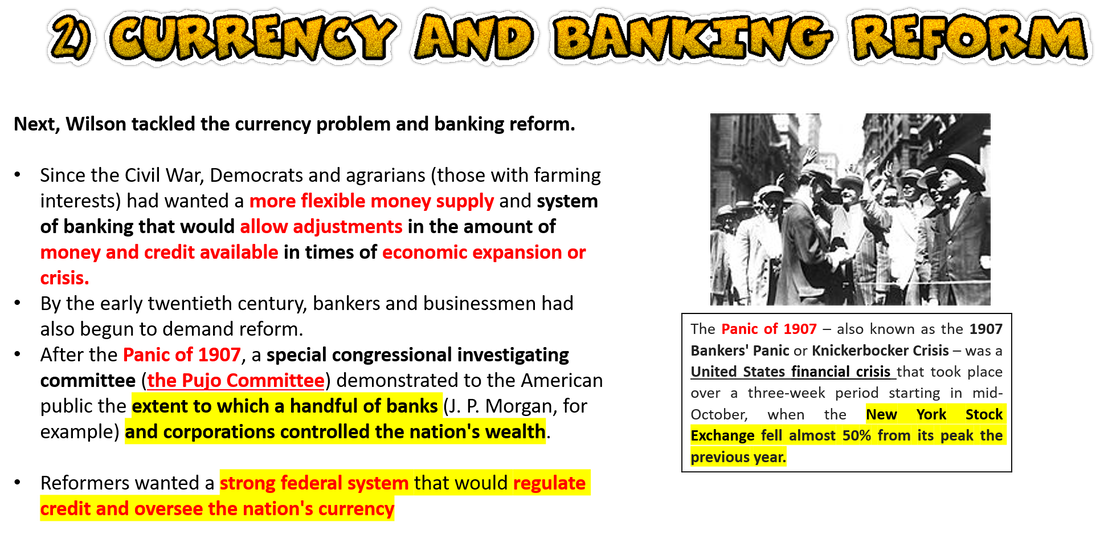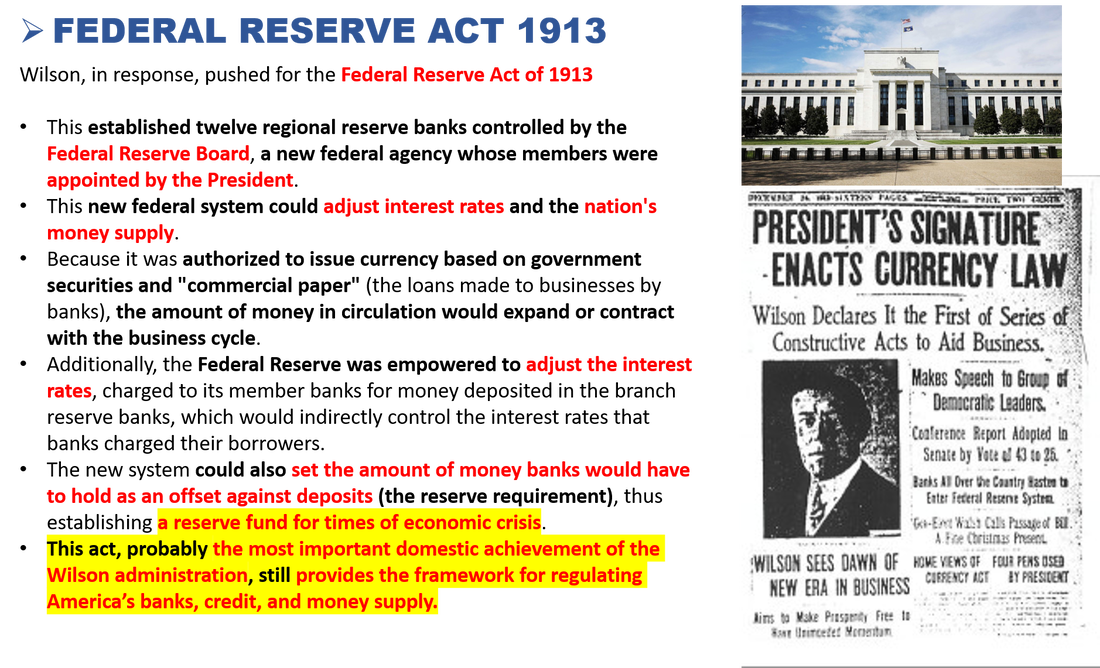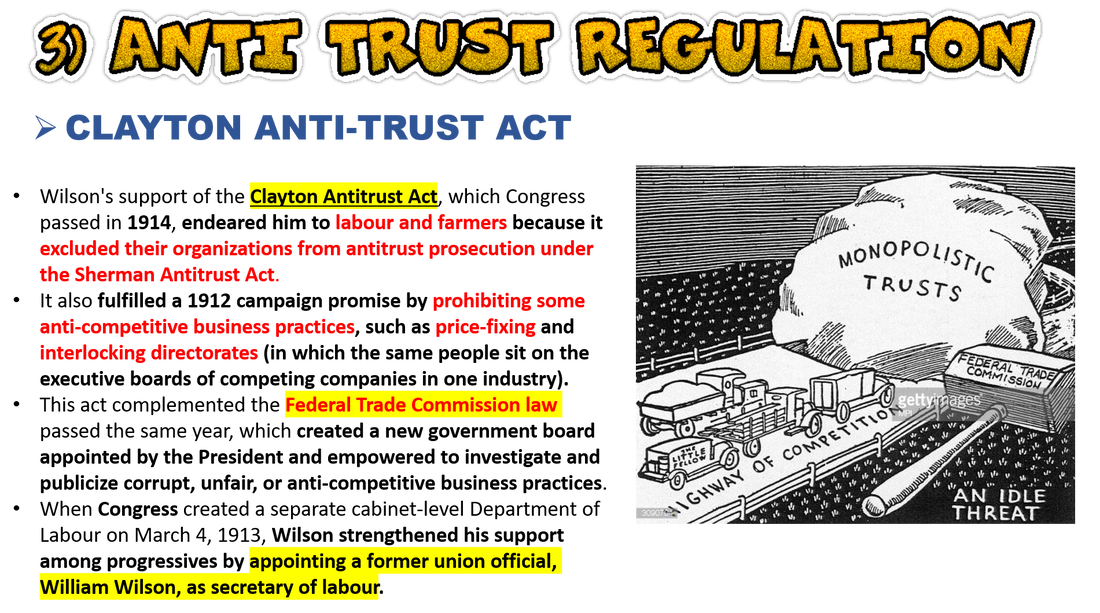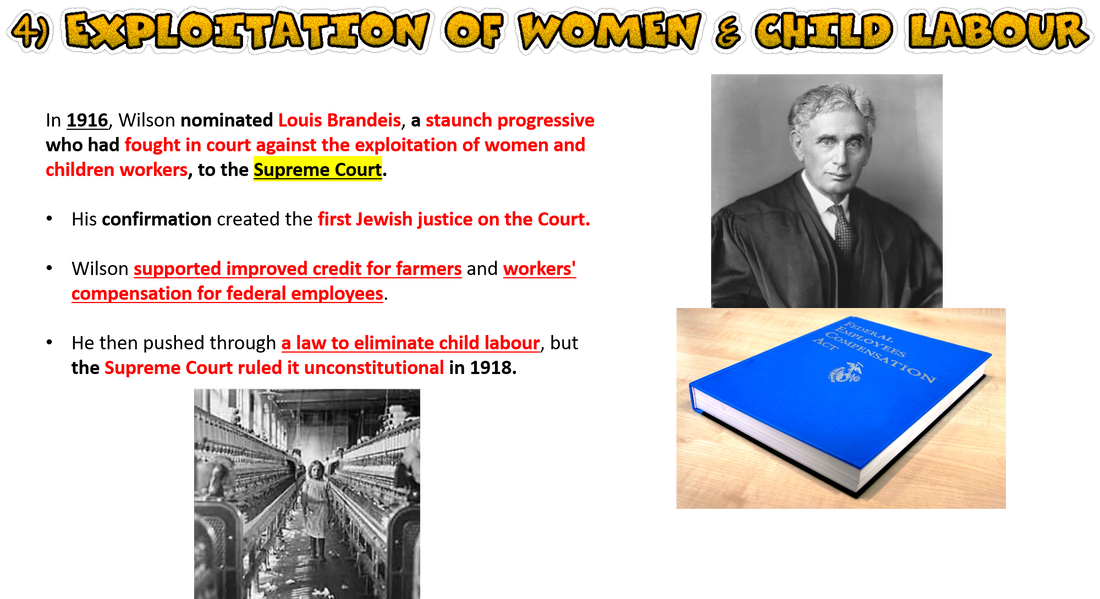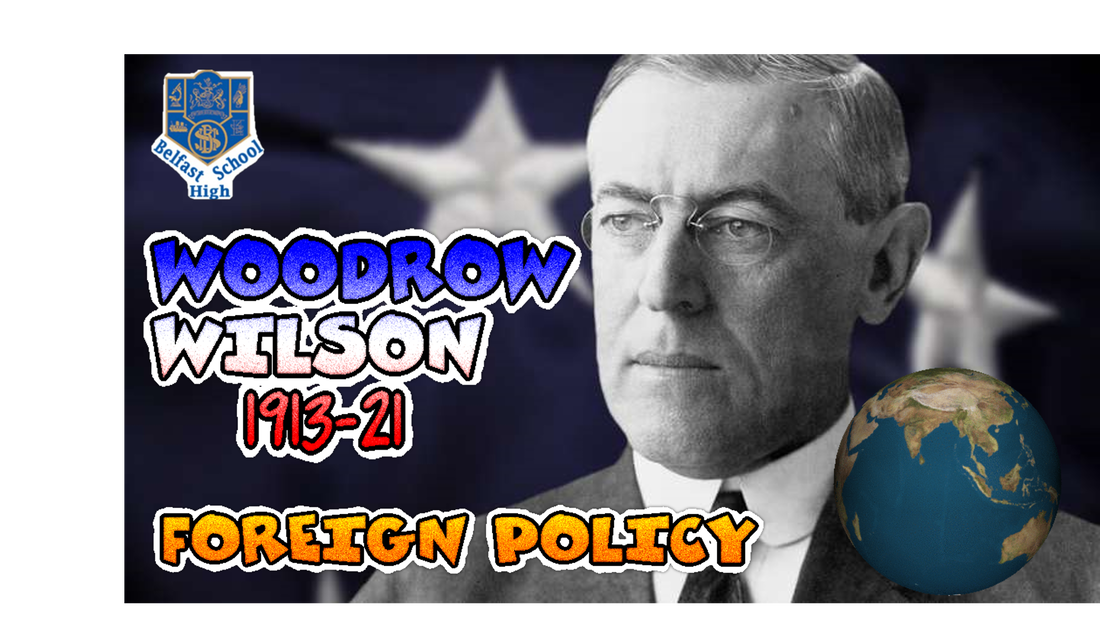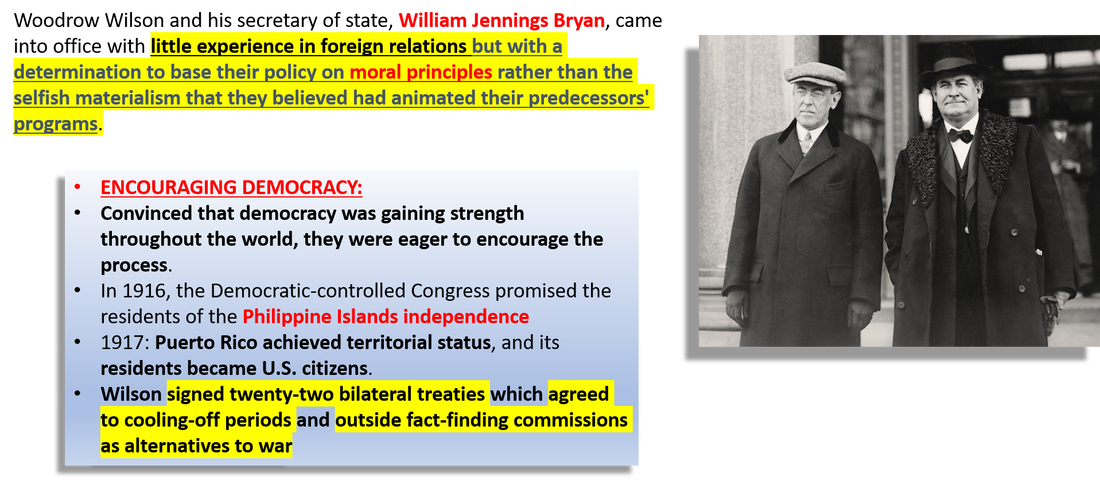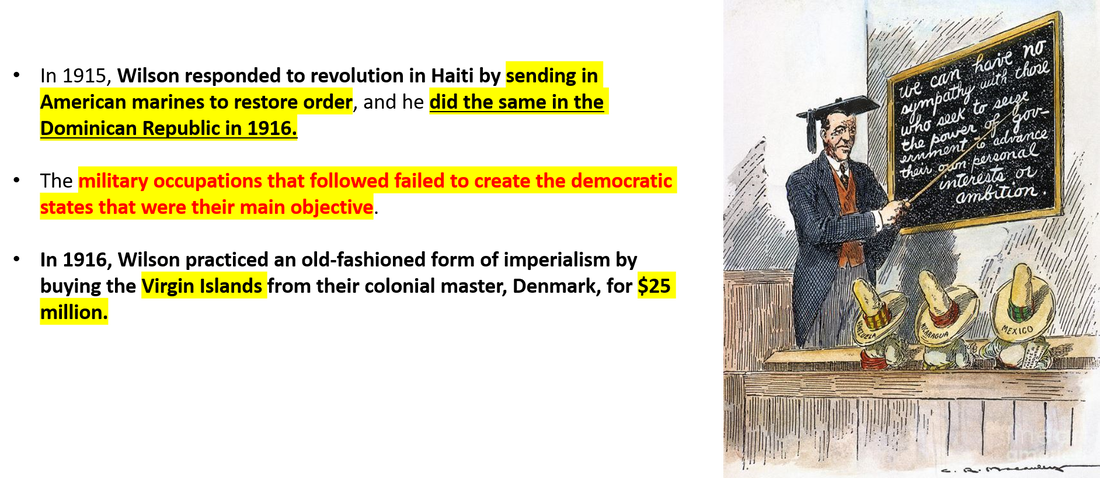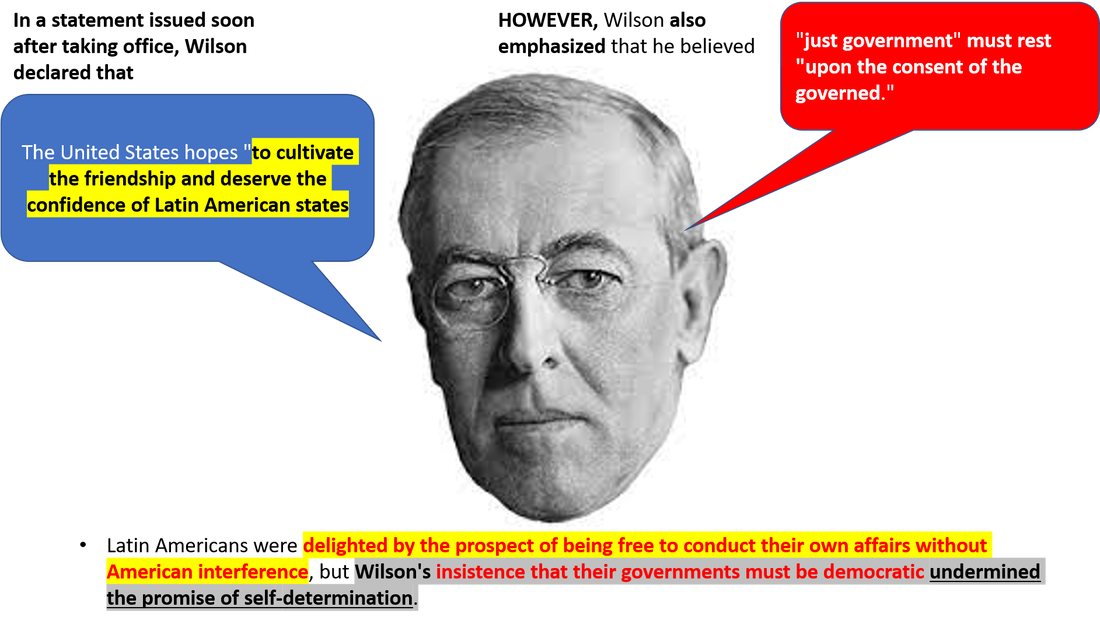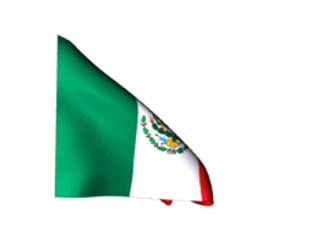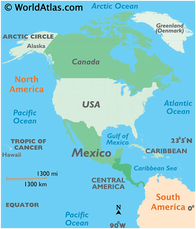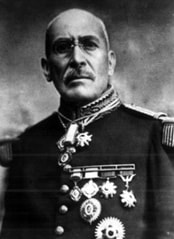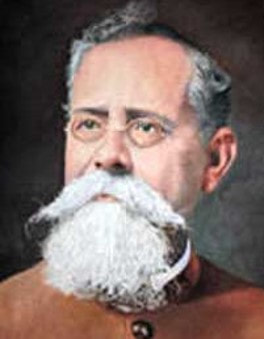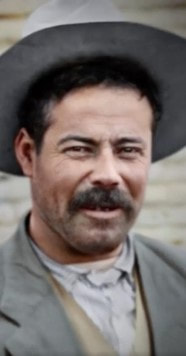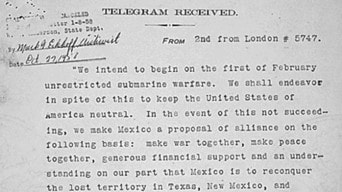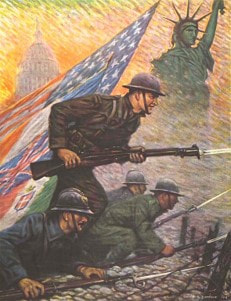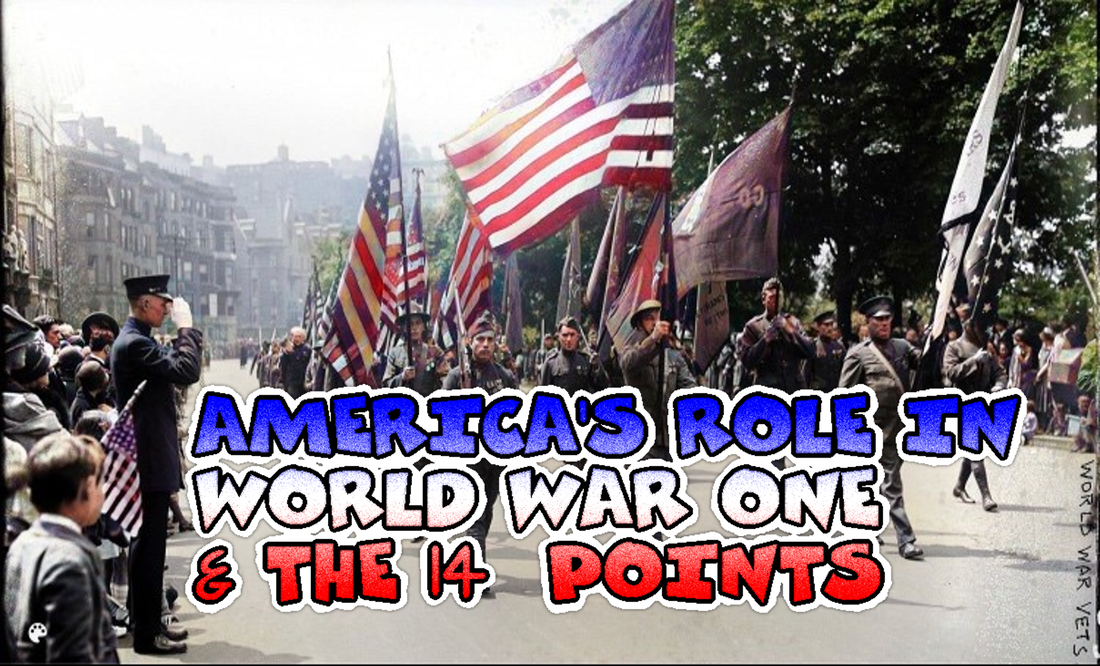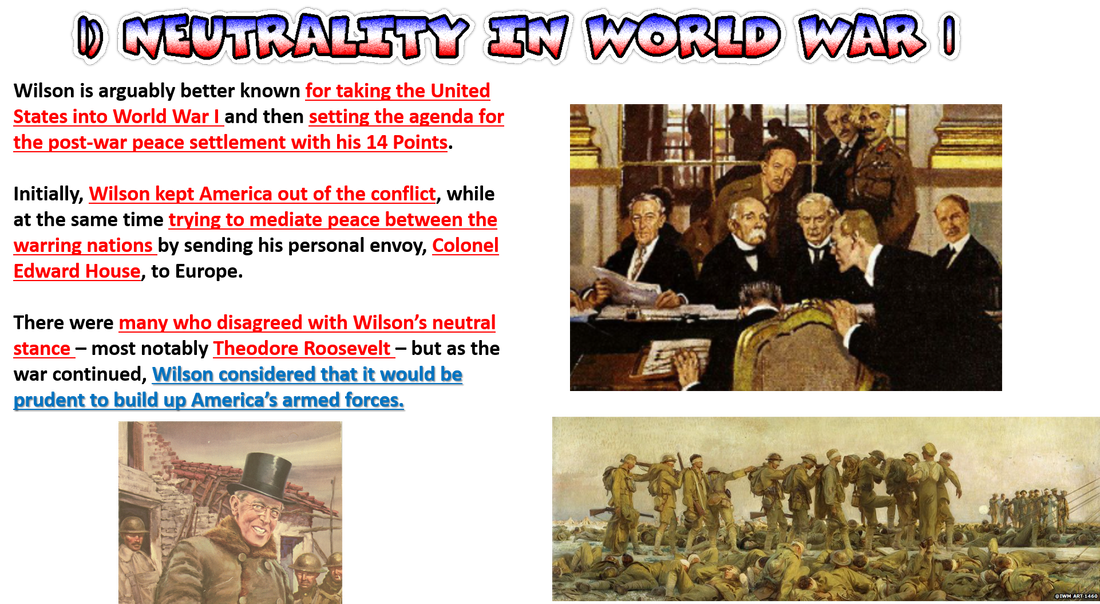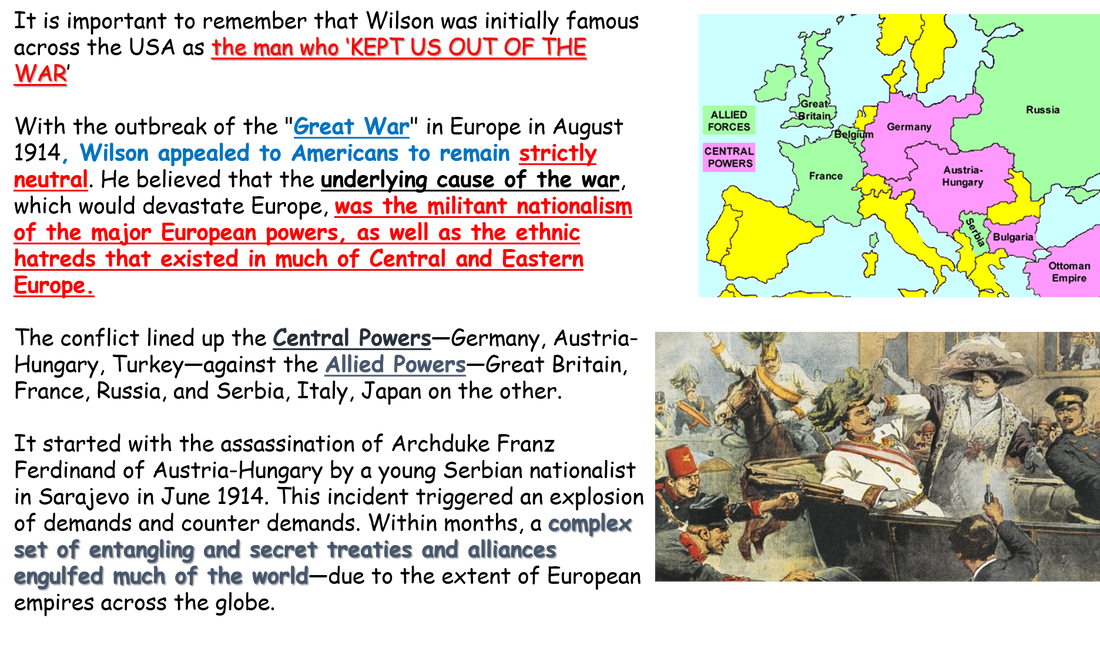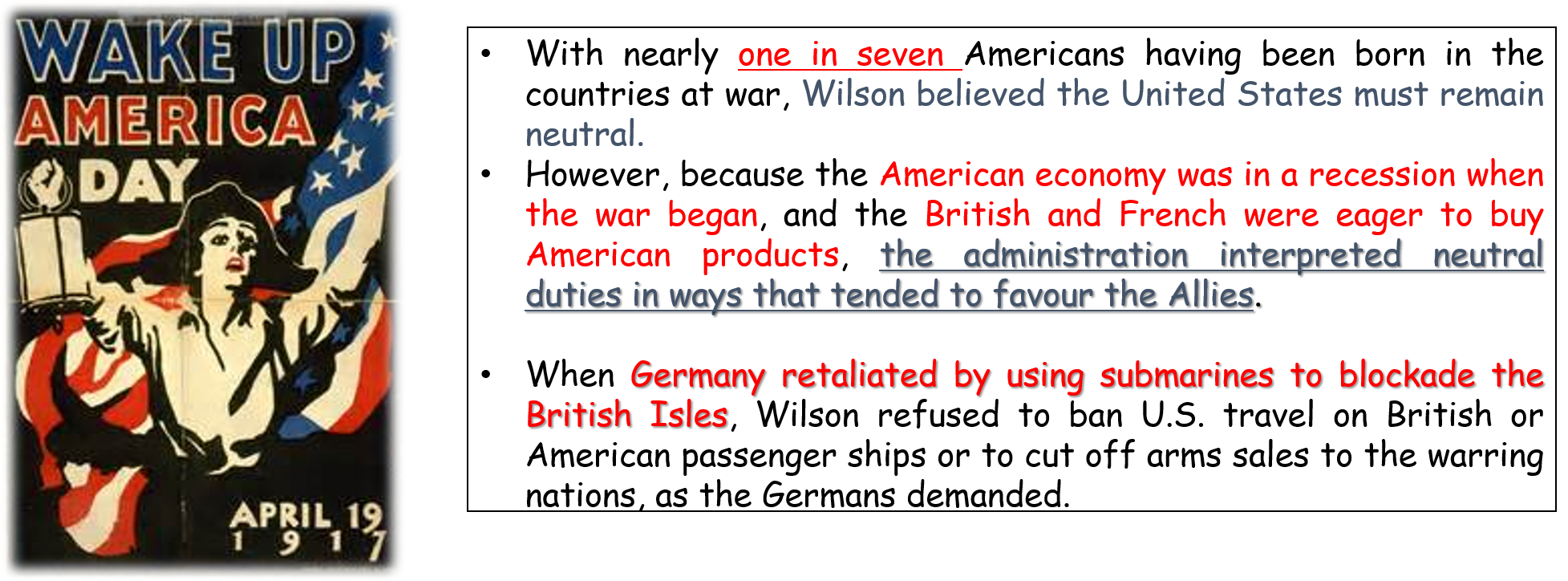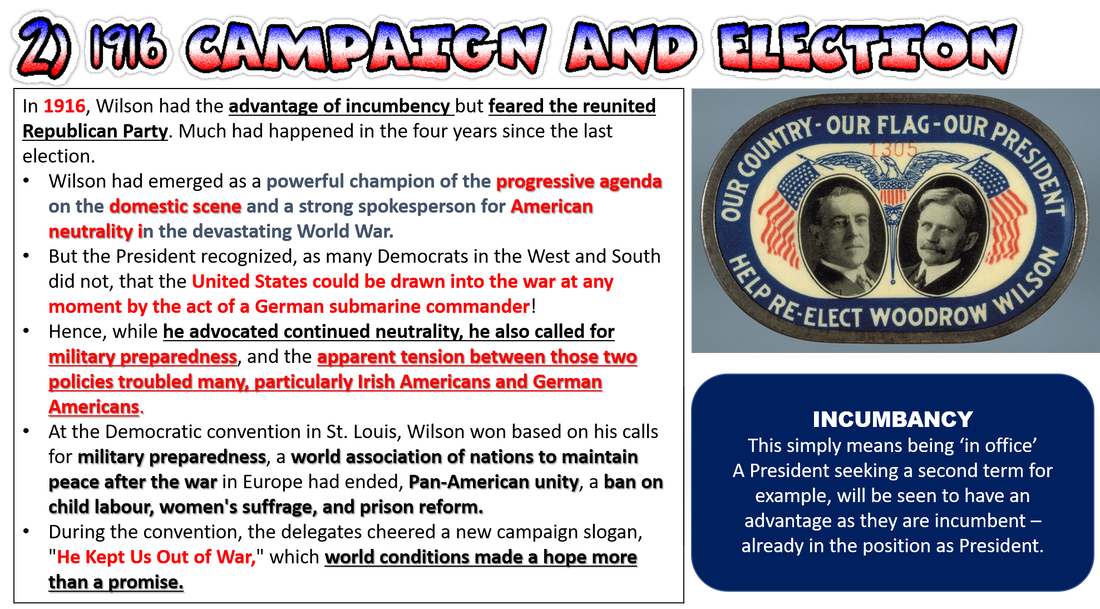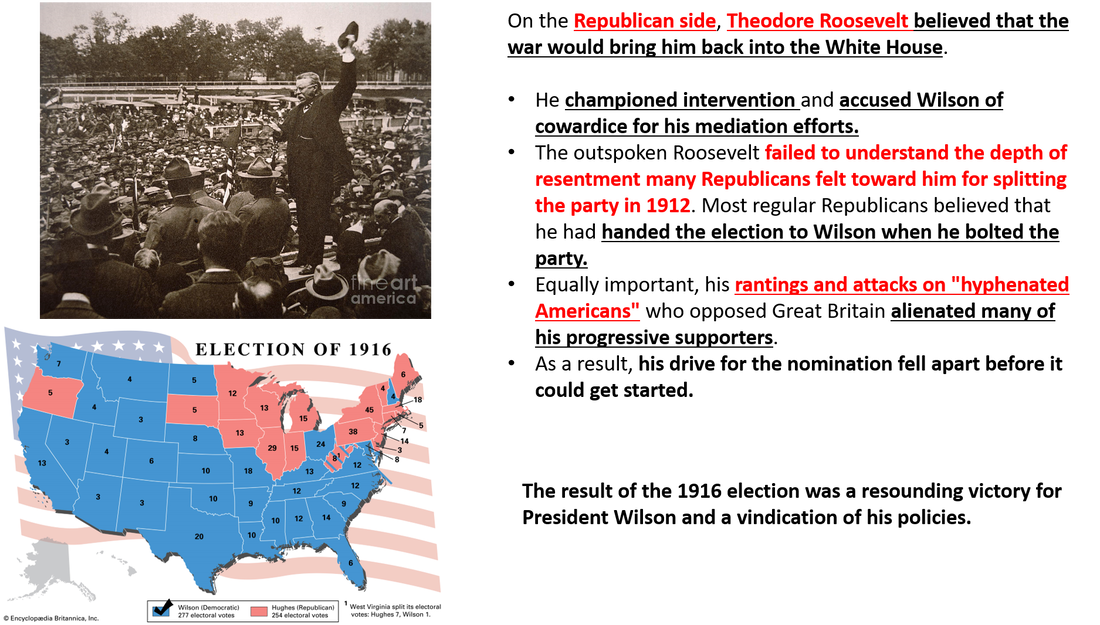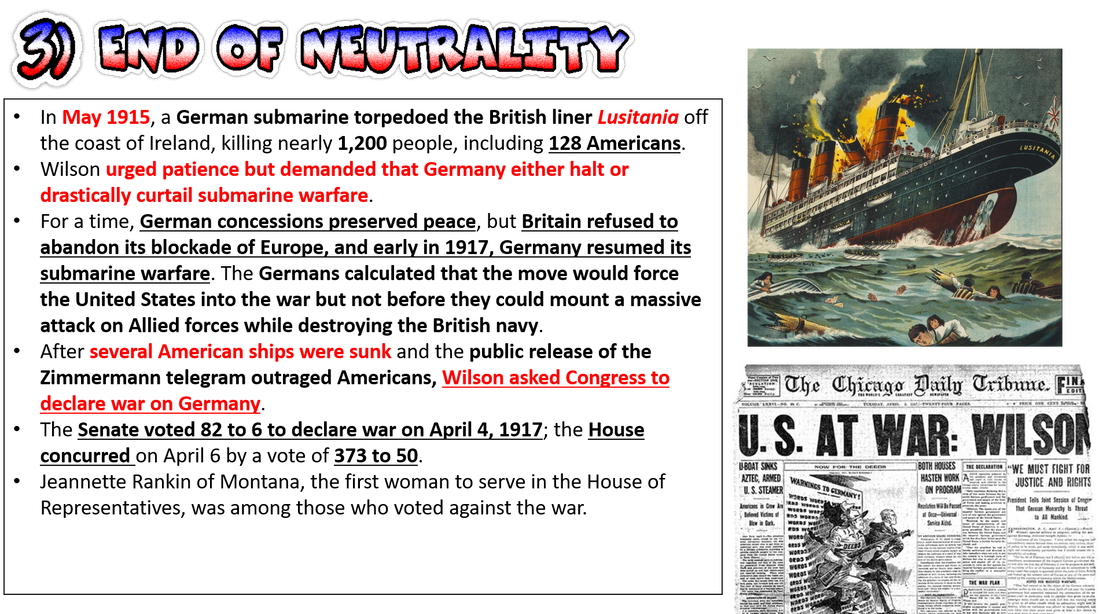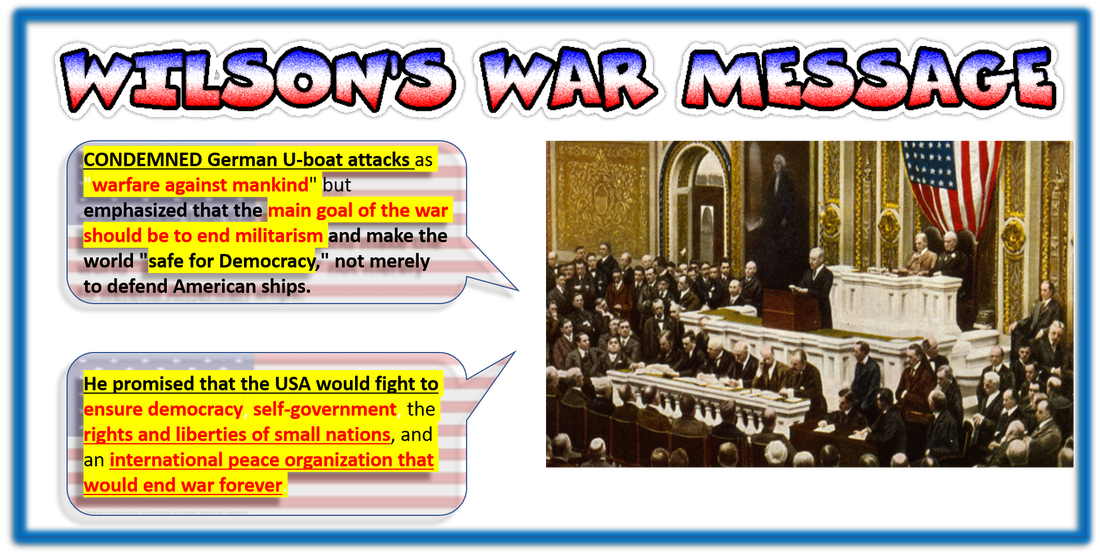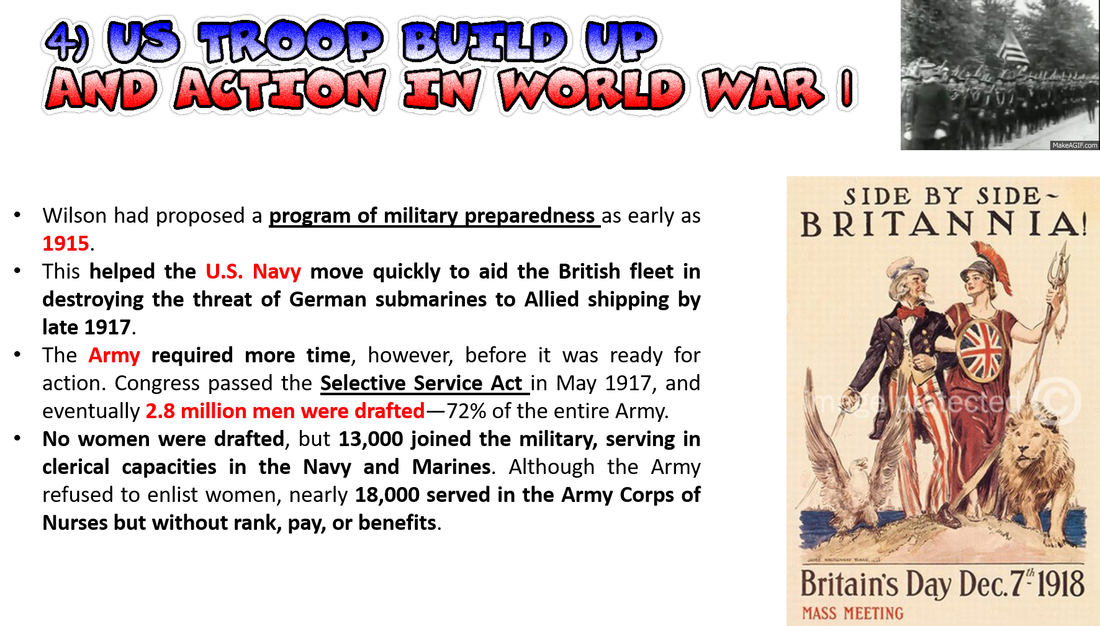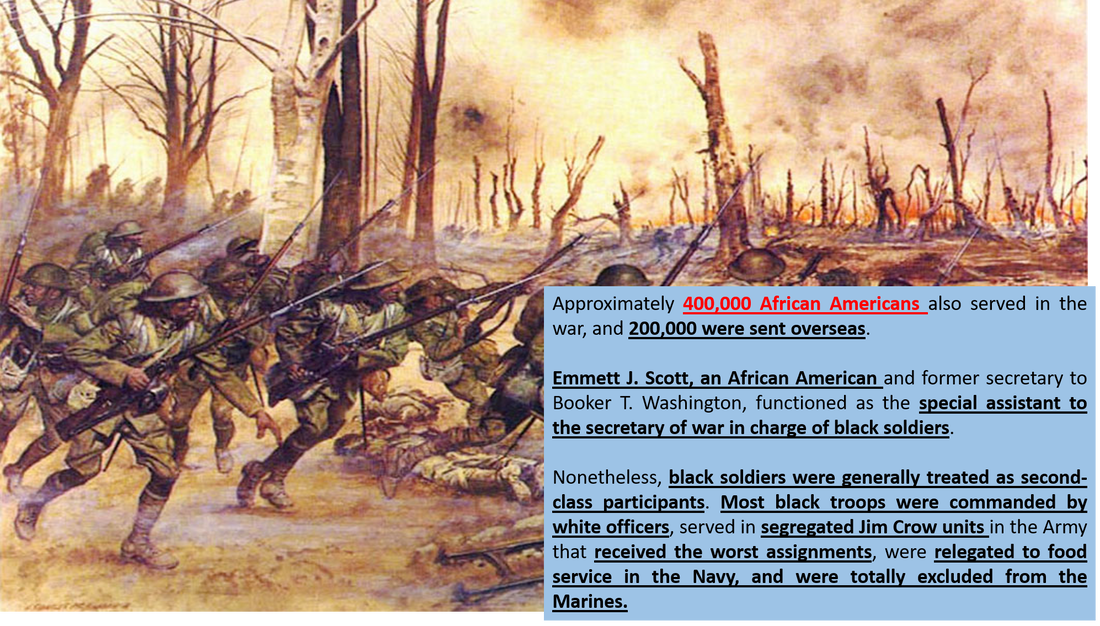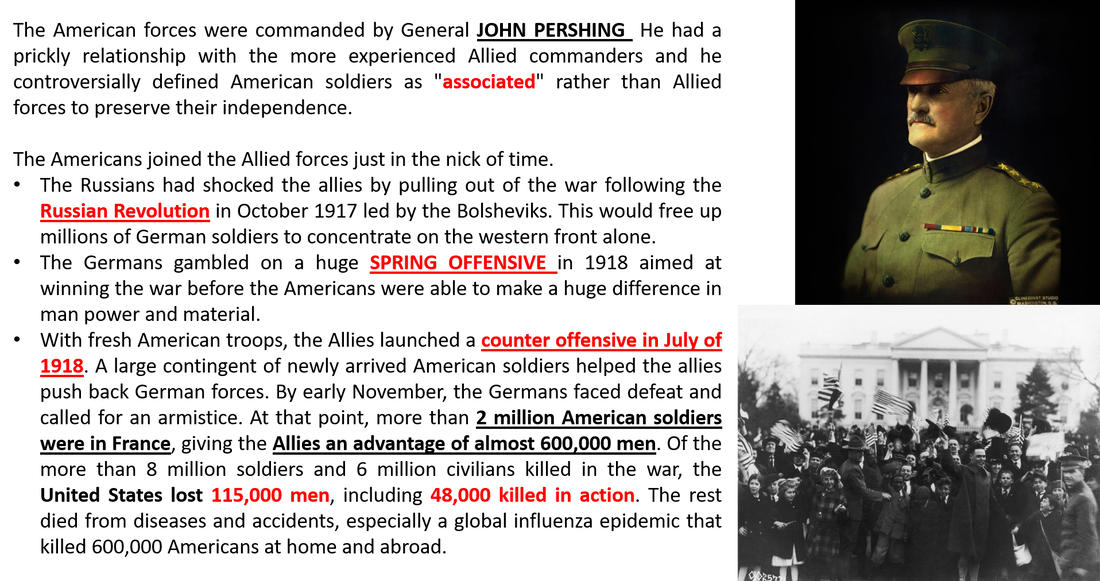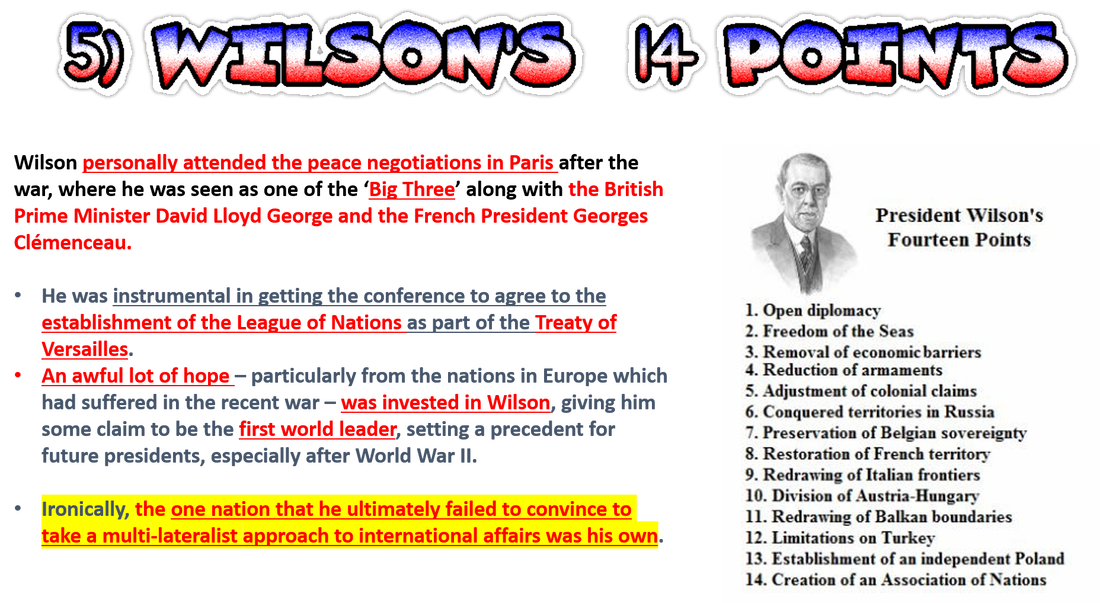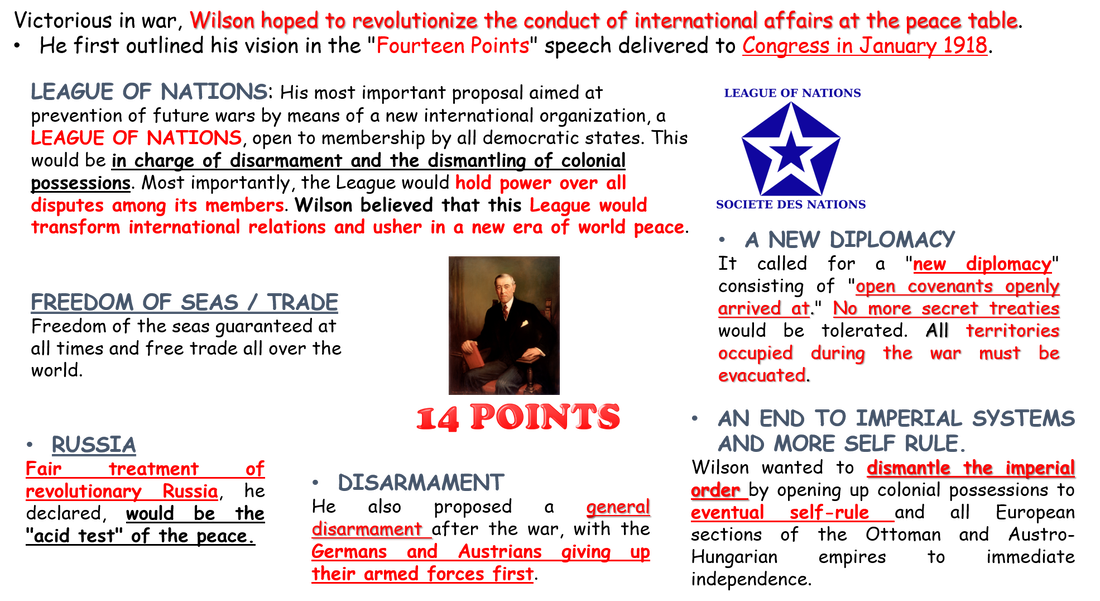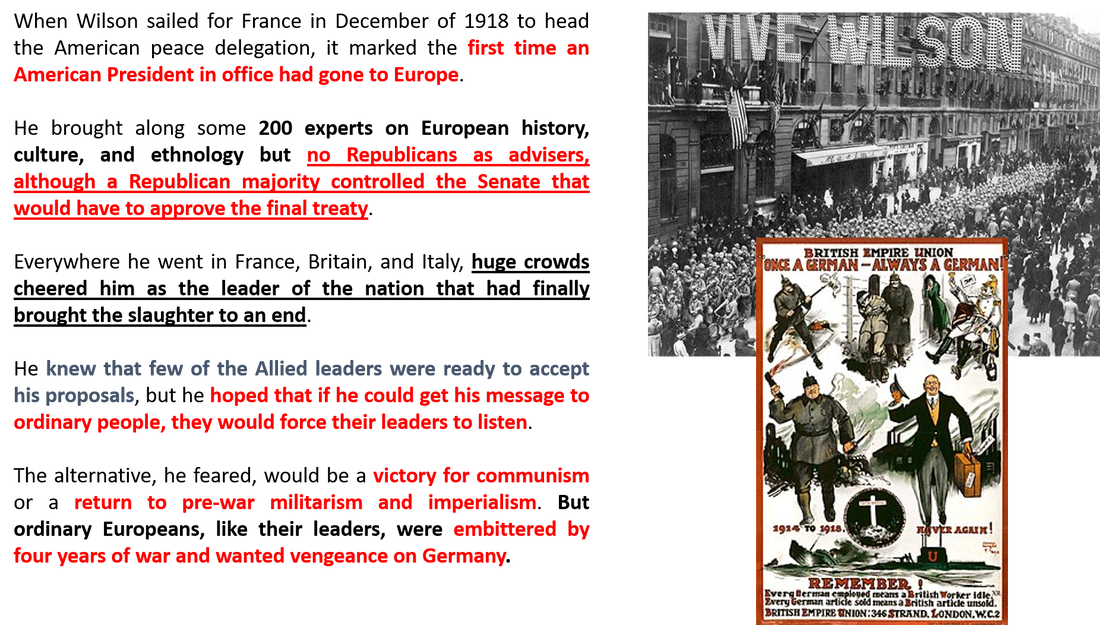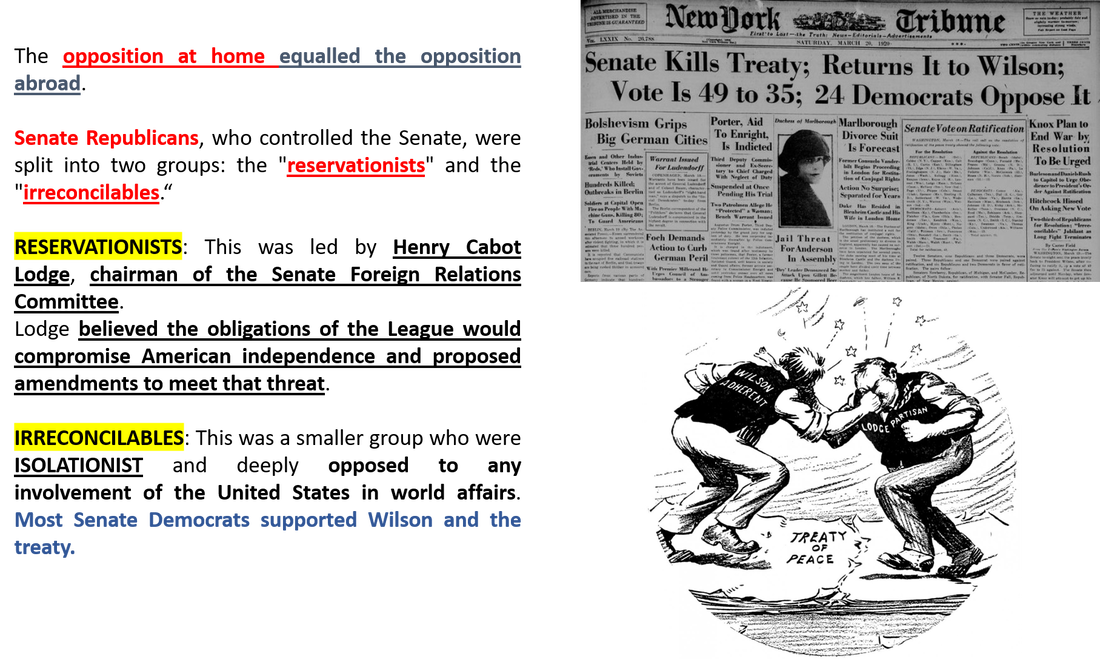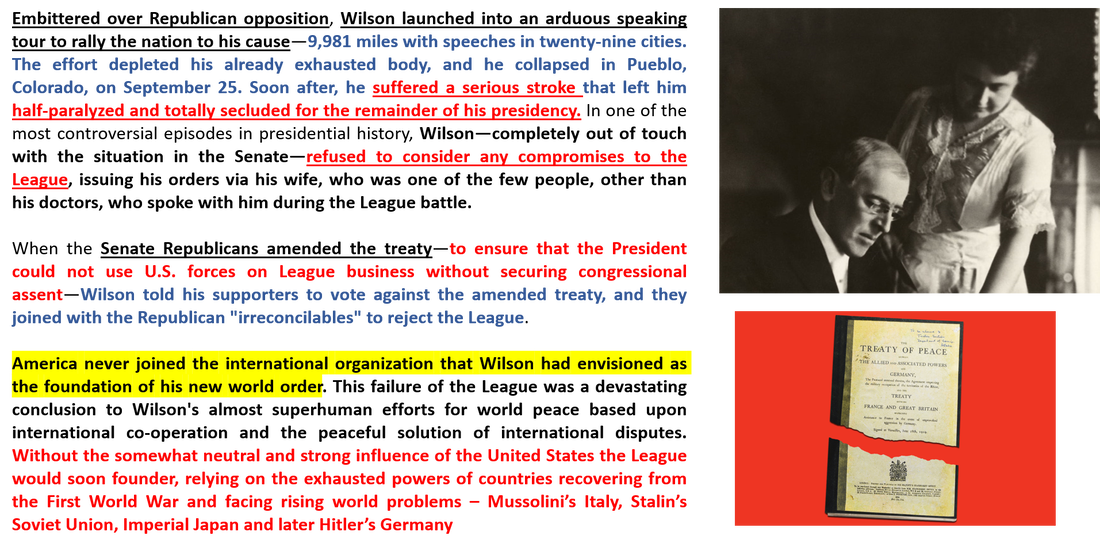WE have looked at the first teddy roosevelt - the second is a democrat - woodrow wilson
|
|
Theodore Roosevelt, came into office in 1913 following the one term President Taft (who was not particularly noteworthy) Wilson was a Democrat and served until 1921. He developed the growth in Executive power begun by his political rival Roosevelt. Although these two were very different temperaments, from different parties with different outlooks they both shared a PROGRESSIVE approach to politics in the United States. They were ready to take the initiative in both DOMESTIC and FOREIGN Policy.
|
However, while Roosevelt had focused firstly on FOREIGN AFFAIRS and then on DOMESTIC POLICY, Wilson was the other way round. Arguably he was the most significant social reformer in US History up to that point, promoting landmark legislation on taxation, GOVERNMENT FINANCE and chiLd labour. his legacy on racial issues and civil liberties is questionable.
|
Wilson has been considered as one of Americas greatest Presidents.
|
Wilson built upon the example of Theodore Roosevelt, and while his immediate successors (Harding, Coolidge, Hoover) would return to the caretaker model of the presidency, Wilson's administration fundamentally altered the nature and character of the presidency.
|
THE WILSONIAN APPROACH..
However, while Wilson wanted to make the office of President dominant, he would do so in a careful and conciliatory way:
Wilson came into the White House like a "priestly visionary," intent on expanding economic opportunity for people at the bottom of society and eliminating special privileges enjoyed by the richest and most powerful members of society.
For him, his New Freedom was a crusade.
Wilson came into the White House like a "priestly visionary," intent on expanding economic opportunity for people at the bottom of society and eliminating special privileges enjoyed by the richest and most powerful members of society.
For him, his New Freedom was a crusade.
|
|
|
|
|
|
the zimmerman telegram= a cause of war
|
WOODROW WILSON
|
|
|
|
|
|
|
|

